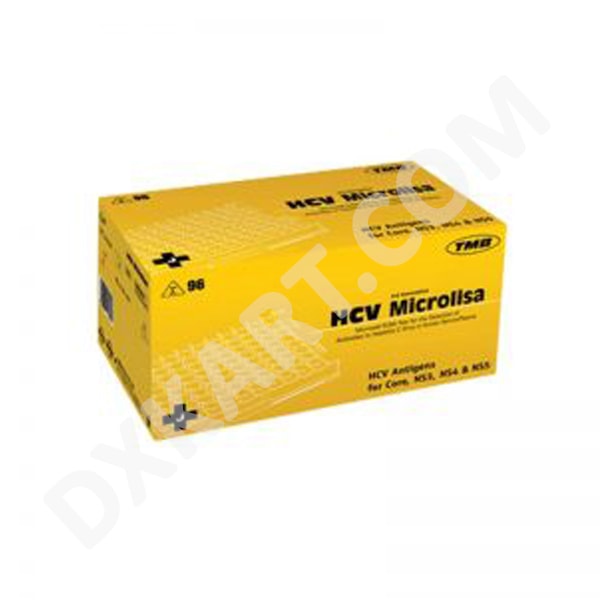
J MITRA
HCV Microlisa Elisa Kit
₹ 3869
₹ 3112
Pack Size:96 Test/Kit

J MITRA
Pack Size:96 Test/Kit
INTENDED USE The 3rd generation HCV Microlisa is an in vitro qualitative enzyme linked immunosorbent assay for the detection of antibodies against HCV (anti-HCVs) in human serum or plasma. The kit is basically intended to screen blood donations to identify and eliminate the infected units of blood and for clinical diagnostic testing. SALIENT FEATURES
The 3rd generation HCV Microlisa is based on a highly sensitive technique, Enzyme linked Immunosorbent Assay which detects antibodies against HCV in human serum and plasma. The HCV proteins are present in serum at levels well below the limits of detection. Thus immunodiagnosis of HCV infection is based on detection of host generated antibodies (anti-HCVs) to viral proteins. The 3rd generation HCV Microlisa utilizes a combination of antigen with the sequence of both HCV structural and non-structural antigens i.e. CORE, E1, E2, NS3, NS4 and NS5. It has an obvious advantage over the available 2nd Generation and 1st Generation Elisa with improved sensitivity and specificity. The combination of antigens for the structural and non-structural HCV proteins is coated onto the microwells. Diluted sample and controls are then incubated. Antibodies to HCV, if present, bind to the immobilized HCV antigens on the microwell during this incubation period. The microwells are then thoroughly washed with the diluted wash buffer to remove excess of unbound anti-HCV or other human IgGs which may interfere with the test. An enzyme conjugate, anti-human IgG conjugated with HRPO is added. The excess of enzyme conjugate is again removed with diluted wash buffer. At this stage the microwells hold only the bound antigen-anti HCV-enzyme conjugate complex. In the next step, the freshly prepared substrate solution is incubated with the complex in the microwells. The enzyme substrate reaction leads to development of a blue colour which is indicative of the Ag-Ab reaction which has occurred in the microwell. In the final step the stop solution is added and the optical density of the developed colour is read at 450nm spectrophotometrically.